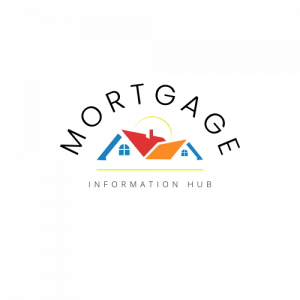
When it comes to buying a home, the journey can be as complicated as it is exciting. One innovative solution that has emerged in recent years is the Joint Borrower Sole Proprietor (JBSP) mortgage. This approach offers a unique way for multiple parties to come together in property ownership.
The Joint Borrower Sole Proprietor (JBSP) mortgage is a collaborative arrangement that allows two or more individuals to pool their financial resources to secure a mortgage loan for a property.
The twist lies in the fact that while multiple individuals are involved in securing the loan, only one person becomes the sole proprietor of the property.
This sole proprietor takes on the responsibilities of mortgage payments and enjoys full control over the property. The other participants, known as joint borrowers, contribute their names to the mortgage but do not share ownership rights.
The JBSP mortgage serves a variety of purposes and is often employed in situations where financial profiles differ between parties.
For instance, couples who are unmarried or cohabiting might utilise JBSP to maximise one person’s creditworthiness while the other contributes to the financial aspect.
This approach is also popular among parents and children looking to buy a home together, as it allows the parent’s income to be considered for a larger mortgage amount.
One crucial aspect of JBSP mortgages is what happens when one of the parties involved passes away. Unlike traditional joint ownership arrangements, where the deceased party’s ownership transfers to the surviving parties, the property remains with the sole proprietor’s estate.
This emphasises the significance of having a clear will and estate plan to ensure the intended distribution of the property after the sole proprietor’s demise.

Written in August 2023 by:
Sam Chester
Age plays a pivotal role in determining the mortgage term for JBSP mortgages. Lenders often set an age limit, typically around 70 or 80, to mitigate potential extended liabilities. The age of the oldest applicant defines the term, which can result in shorter mortgage terms and higher monthly payments. Lenders assess the loan term from the joint borrower’s current age to their intended retirement age, which can lead to varying mortgage terms.
Given the complexity of JBSP mortgages and the unique dynamics they involve, seeking separate legal advice is crucial for all parties. Each individual’s rights, responsibilities, and potential risks need to be clearly understood before entering into such an arrangement. This is especially true for parents who are joint borrowers, as they take on the obligation to repay the mortgage if the other applicants are unable to.
One of the critical considerations in JBSP mortgages is the scenario where the sole proprietor (SP) is unable to make mortgage payments. In such cases, joint borrowers (JB) – the co-signers of the mortgage – may be required to step in and cover the missed payments.
This shared responsibility is a defining feature of JBSP mortgages and emphasises the need for clear communication, contingency planning, and potentially seeking assistance from the lender to avoid adverse consequences.
The primary distinction between a JBSP mortgage and a joint mortgage lies in the ownership aspect. Not all borrowers in a JBSP mortgage become property owners.
When you’re listed as the property owner, your name is included on the title deeds, and you’re accountable for paying Stamp Duty. If you’re solely a borrower, you don’t hold any claim to the property’s ownership, but you are responsible for the loan repayment.
On the other hand, a joint mortgage caters to individuals aiming to collectively own and purchase a home.
JBSP mortgages are frequently utilised to facilitate home purchases among close family members, but alternatives exist as well:
Guarantor Mortgage: A guarantor, typically a parent, offers savings or their own property as collateral in place of a traditional deposit. This enables the mortgage applicant to proceed with minimal or no savings.
Tenants-in-Common Mortgage: Borrowers each acquire a share of the property, which they can individually sell without involving the other tenants.
Shared Ownership: Borrowers employ a mortgage to purchase a share of a property and subsequently pay rent on the remaining portion. This scheme is administered by developers.
Rent to Buy: Tenants pay reduced rent on a newly constructed property while saving for a deposit that eventually enables them to purchase the property or a share of it. This is a government-backed initiative.
Opting for a joint-borrower-sole-proprietor mortgage offers various advantages, but it may not suit everyone.
Benefits:
Drawbacks:

We’re like human search engines, but with a side of humour!
So ask away, and we’ll sprinkle some laughter into your answers! No silly questions, only hilarious responses allowed!

The content within this article is as accurate as the date it was written. To ensure the most up to date information, you should consult with one of the experts that we work with as every lender and their polices are different and can be changed or amended without notice.
This website is for information only and does not constitute financial advice. Our mortgage advisers are all fully qualified to provide mortgage advice in accordance with the Financial Conduct Authority (FCA) regulations. We only exclusively operate with businesses that are authorised and regulated by the FCA. All advice offered will be unique to your individual circumstances.
Some Buy to Let mortgages are not regulated by the FCA. You should carefully consider securing other debts against your home. If you do not keep up your mortgage repayments, your home may be repossessed. Equity released from your home will also be secured against it.

Ready to join the party?
Give us a ring-a-ding!
We're thrilled to hear from you! Whether it's a question, a suggestion, or just a friendly chat, we're all ears!
Calling us is like a direct line to awesome-ness! Our team is here to make your day brighter!
Don't be shy, let's talk and have a blast together!

🌟 We're here to assist you every step of the way in finding the perfect broker for your needs.
Simply fill out the form below, and our knowledgeable team will serve as your trusted mortgage guides.
Now, let's lighten the mood with a mortgage-related joke:
Why did the mortgage broker bring a ladder to work?
Because they wanted to reach new heights in finding the best deals! 😄🏠